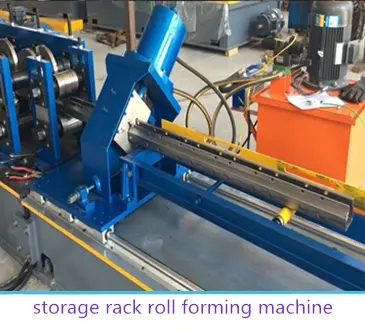
Introduction to Gutter Downspout Roll Forming Machines
In the world of metal fabrication, specific machinery plays a crucial role in producing high-quality building materials, and one of the most significant machines in this category is the gutter downspout roll forming machine. This specialized equipment is designed to create downspouts and gutters that are essential for effective rainwater management in residential and commercial buildings. Understanding the features, processes, and benefits of using a gutter downspout roll forming machine can significantly impact the efficiency and quality of gutter production.
Understanding the Roll Forming Process
Roll forming is a continuous bending operation in which a long strip of metal is fed through consecutive pairs of rolls. As the strip progresses through the rolls, it gradually takes on the desired shape. The gutter downspout roll forming machine is engineered to create various profiles used in gutter systems, typically from materials like aluminum or galvanized steel. This process is characterized by its ability to produce parts with consistent dimensions and minimal waste, making it an efficient production method.
Key Components of the Machine
A typical gutter downspout roll forming machine comprises several essential components that facilitate the shaping of the metal
1. Feeding Mechanism This system ensures that the metal coil is fed into the machine at a consistent rate, which is crucial for maintaining the quality of the finished product. 2. Roller Stations The heart of the roll forming machine consists of multiple roller stations that shape the metal strip. Each station progressively modifies the strip until it reaches the final desired profile.
3. Cutting Mechanism Once the desired length is achieved, the cutting mechanism slices the formed metal into individual sections. This component can be adjusted to accommodate various sizes as needed.
4. Control System Modern machines are equipped with advanced control systems, allowing operators to easily adjust settings such as speed, length, and profile type through a user-friendly interface.

Advantages of Using Gutter Downspout Roll Forming Machines
The adoption of gutter downspout roll forming machines comes with several advantages
- Efficiency The roll forming process is highly efficient, capable of producing long runs of gutter sections with minimal interruption. This efficiency translates into increased productivity and reduced labor costs.
- Precision With the use of high-quality rollers and control systems, these machines produce parts with tight tolerances, ensuring the finished gutters fit together seamlessly during installation.
- Versatility Gutter downspout roll forming machines can be customized to create various profiles, allowing manufacturers to meet different market demands. They can produce items like square or rectangular downspouts and various gutter shapes.
- Material Conservation The continuous nature of roll forming results in less scrap metal compared to other manufacturing processes, making it a more sustainable option for metal fabrication.
Conclusion
In conclusion, gutter downspout roll forming machines are a vital part of the building materials manufacturing industry. By utilizing advanced technology and efficient production processes, these machines optimize the creation of critical components for rainwater management systems. As the demand for high-quality, durable, and efficient building materials continues to grow, investing in gutter downspout roll forming machines will ensure that manufacturers remain competitive and meet the evolving needs of their clients. The future of gutter systems will be shaped by the capabilities of this essential machinery, driving innovation and quality in the construction sector.